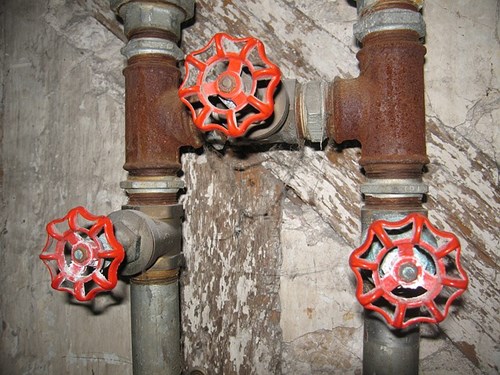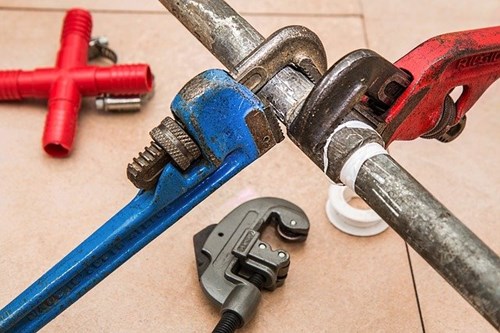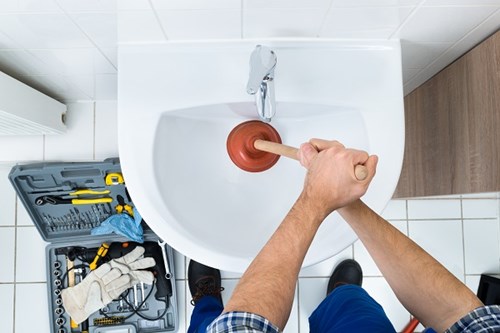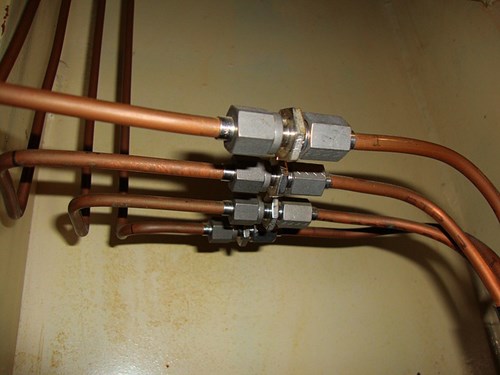Do you have the DIY plumbing bug? Our experts are here to offer advice on how to become a DIY at-home plumbing expert. Read on for our 5 top tips.
DIY plumbing is one of those areas which, while not posing any out-and-out dangers, can easily land the inexperienced in deep water.
On the face of it, plumbing is fairly straightforward. At the most basic level, it’s just a case of fixing the right parts together in the right order. The main difficulty self-starters face involves getting access to the pipework.
And then, of course, there is the added complication of working with water.
However, if you are determined to make yourself handier around the house and fancy a crack, here are five great pro plumbing tips to get you started.
5 plumbing DIY tips
1. How to turn off the main water supply
 The first topic of the first class of plumping 101 - making sure the pipes you are working with are empty of water before you start fiddling with them. Try to do anything with your plumbing system without switching off the water supply, even something as small as mending a leaky tap, and you risk a big messy flood. Find out where the mains stopcock for your home is, as well as where any secondary shut off valves are located. Once you have shut the supply off, make sure you run your taps to empty any water left in the pipes before you start working.
The first topic of the first class of plumping 101 - making sure the pipes you are working with are empty of water before you start fiddling with them. Try to do anything with your plumbing system without switching off the water supply, even something as small as mending a leaky tap, and you risk a big messy flood. Find out where the mains stopcock for your home is, as well as where any secondary shut off valves are located. Once you have shut the supply off, make sure you run your taps to empty any water left in the pipes before you start working.
2. Invest in a pipe wrench

Any skilled tradesperson relies on having the right tools for the job, and this applies to the DIY plumber too. If you try to start unscrewing and then replacing pipework with a regular adjustable spanner you will soon run into one of two problems - you won’t be able to loosen stubborn joints, and then you won’t be able to tighten them so they are fully sealed again. If you are determined to go it solo with your plumbing, invest in a pipe wrench.
3. Use plumbing tape for leaks
Found a leak under a sink? Before you start worrying about having to replace an entire set of taps or section of the drainage system, have a close look at where the leak is cooking from. Nine times out of 10, it will be from a joint that has worked loose. A great hack is to buy some plumber’s tape from a trade store, take the suspect joint apart and wrap the tape around the inside of the thread. This should seal the joint again, at least for a while.
4. Practice good drain hygiene
 5. As they say in the medical world, prevention is better than a cure, and the same principle applies to DIY plumbing. When it comes to your drainage system especially, the best way to keep everything in good working order is not by building up your DIY skills, but by keeping your pipes clean and clear in the first place. So, no solid food down the kitchen sink, no un-flushable objects down the toilet. But, crucially, if you do suspect there’s a blockage, don’t leave it to get worse - get your plunger and drain snake out straight away to unclog them.
5. As they say in the medical world, prevention is better than a cure, and the same principle applies to DIY plumbing. When it comes to your drainage system especially, the best way to keep everything in good working order is not by building up your DIY skills, but by keeping your pipes clean and clear in the first place. So, no solid food down the kitchen sink, no un-flushable objects down the toilet. But, crucially, if you do suspect there’s a blockage, don’t leave it to get worse - get your plunger and drain snake out straight away to unclog them.
6. Know your limitations
 Finally, the best tip for any kind of DIY is to know when a particular job is beyond your skill-set. With plumbing, there are some fairly black-and-white rules of thumb you can apply. Only ever attempt a job on pipework that is in easy reach under a sink or bath. You only compound how fiddly plumbing can be if you start to pull up floorboards and hack through plasterboard to get at other sections. Don’t bother with anything that involves copper piping - you need to know how to handle a welding torch to seal them properly. And never, ever mess with the water supply in and around your boiler - it’s not worth the risk of making a mistake.
Finally, the best tip for any kind of DIY is to know when a particular job is beyond your skill-set. With plumbing, there are some fairly black-and-white rules of thumb you can apply. Only ever attempt a job on pipework that is in easy reach under a sink or bath. You only compound how fiddly plumbing can be if you start to pull up floorboards and hack through plasterboard to get at other sections. Don’t bother with anything that involves copper piping - you need to know how to handle a welding torch to seal them properly. And never, ever mess with the water supply in and around your boiler - it’s not worth the risk of making a mistake.
Fast reliable plumbing repairs
In need of any of these situations? Do you have a leak you need fixing in an emergency, or do you have a blocked drain you just cannot shift? Get a quote for a certified local plumber through Go Assist today.
